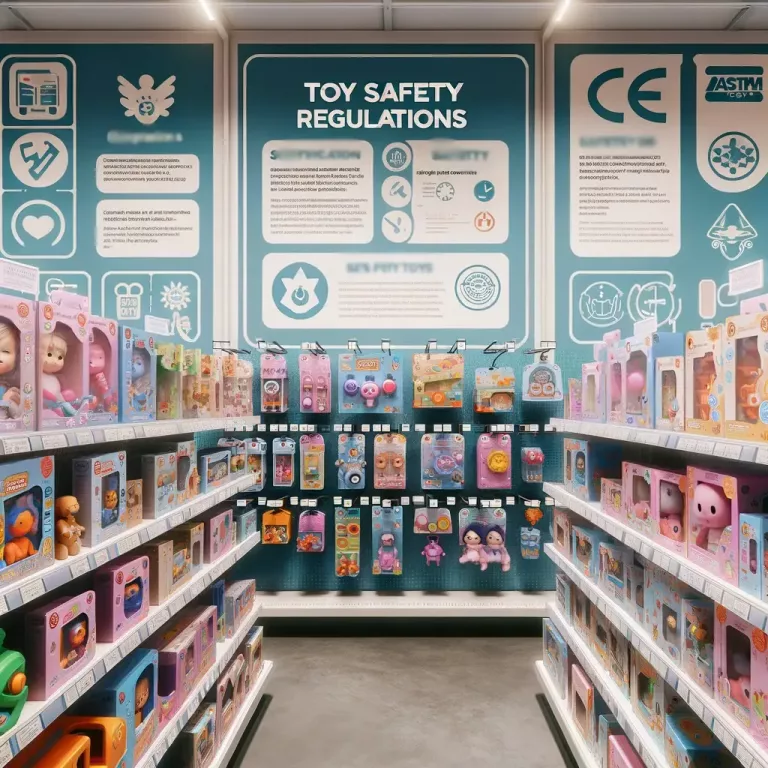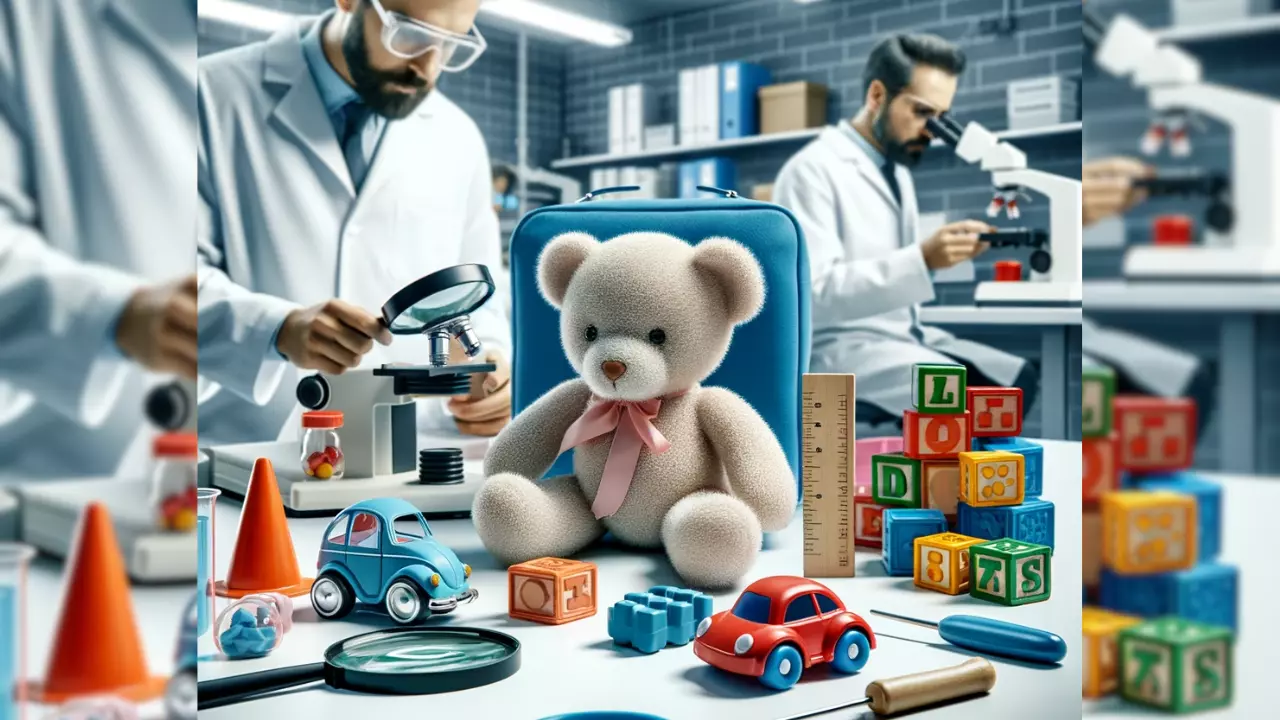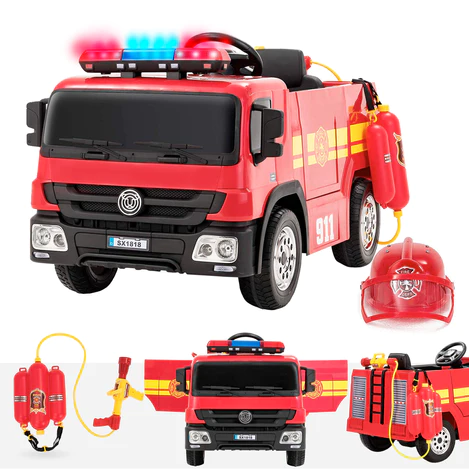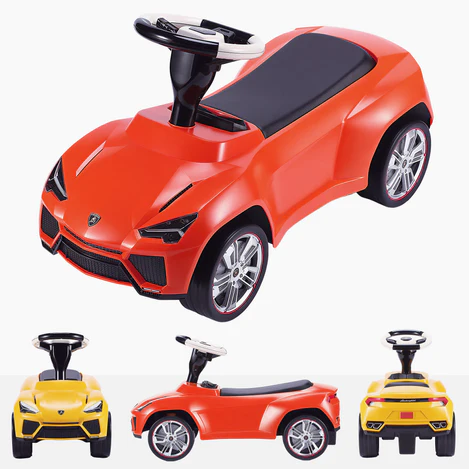As parents, caregivers, or anyone invested in the well-being of children, understanding how toys are tested for safety is paramount.
With a plethora of toys flooding the market, it’s essential to be informed about what makes a toy safe and compliant with global standards.
When it comes to toy safety, the United Kingdom doesn’t take any chances. Under the Toys (Safety) Regulations 2011 for Great Britain, specific standards are in place to make sure toys are safe for kids.
What’s interesting is that the UK keeps these standards up to date, adjusting the list to meet current safety needs.
For example, on June 22, 2023, they updated their list to include new standards, like EN 71-13:2021+A1:2022, which covers the safety of olfactory board games, cosmetic kits, and gustative games.
It’s a clear sign of their commitment to keeping playtime safe and enjoyable.
This article delves into the rigorous processes behind ensuring toy safety, aiming to provide you with the knowledge to make informed decisions when selecting toys for the young ones in your life.
Table of Contents
ToggleRegulations and Standards

Global Safety Regulations: An Overview
In the realm of toy safety, several key regulations and standards are the cornerstones of ensuring products are safe for our children.
In the US, the ASTM F963 standard sets the tone, while across the pond in the EU, the CE EN71 Toys Certification plays a similar role.
For a broader, global perspective, ISO 9000 and ISO 9001 certifications provide additional layers of safety assurance.
These regulations are not just bureaucratic red tape; they are critical in safeguarding our children from potential harm.
| Regulation Name | Description |
|---|---|
| ASTM F963 | Standard Consumer Safety Specification for Toy Safety in the US |
| CE EN71 | Toys Certification for European Union, covering safety aspects like flammability and chemical properties |
| ISO 9000 / ISO 9001 | Global quality management standards providing guidelines for effective quality management systems |
The Role of Safety Standards in Toy Manufacturing
Why do these standards matter?
In essence, they serve as a benchmark, a set of criteria that toys must meet to be deemed safe.
They cover a range of concerns, from the materials used in manufacturing to the design and construction of the toy itself.
The UK sets precise toy safety standards to ensure compliance with regulations, addressing various aspects such as mechanical properties, flammability, and the migration of chemical elements.
This comprehensive approach ensures that toys not only provide fun and entertainment but are also safe and secure for children to use.
The complete list of standards is summarised in Table 1.
The Department for Business, Energy & Industrial Strategy
Part 2 of Annex I to Notice of Publication 0063/22 of September 1, 2022, of References to Standards for Toys in Support of the Toys (Safety) Regulations 2011 (S.I. 2011/1881) (per text in the Notice)
| Entry | Standard | Title |
|---|---|---|
| 1 | EN 71-1:2014+A1:2018 | Mechanical and physical properties |
| 2 | EN 71-2:2020 | Flammability |
| 3 | EN 71-3:2019+A1:20211 | Migration of certain elements |
| 4 | EN 71-4:2020 | Experimental sets for chemistry and related activities |
| 5 | EN 71-5:2015 | Chemical toys (sets) other than experimental sets |
| 6 | EN 71-7:2014+A3:2020 | Finger paints |
| 7 | EN 71-8:2018 | Activity toys for domestic use |
| 8 | EN 71-12:20162 | N-Nitrosamines and N-nitrosatable substances |
| 9 | EN 71-13:2021 | Olfactory board games, cosmetic kits and gustative games |
| 10 | EN 71-14:2018 | Trampolines for domestic use |
| 11 | EN 62115:2005 EN 62115:2005/A2:2011 EN 62115:2005/A11:2012 EN 62115:2005/A12:2015 EN 62115:2005/A2:2011/AC:2011 EN 62115:2005/A11:2012/AC:2013 | Electric toys |
Effective date: September 1, 2022
Testing Requirements
The Necessity of Third-Party Testing
To ensure compliance, toys intended for children aged 12 and under must undergo rigorous testing by a CPSC-accepted testing laboratory.
This independent evaluation is crucial in maintaining objectivity and ensuring that toys meet stringent safety standards.
A Closer Look at Specific Testing Requirements
What exactly are these tests looking for?
Key aspects include small parts that could pose choking hazards, the use of magnets, how easily a toy might catch fire (flammability), and the clarity and accuracy of labeling.
Each of these factors plays a vital role in determining whether a toy is safe for children.
Testing Requirements
The Process of Toy Testing
To gain a clearer understanding of how toys are tested for safety, it’s important to delve into the actual process.
Initially, there’s a design analysis to identify potential hazards.
Following this, toys undergo a series of safety tests and common tests.
These tests include checking for toxic substances, ensuring the strength and durability of the toy, and verifying that all mechanical and electronic functions are safe and reliable.
This comprehensive process ensures that by the time a toy reaches the shelves, it has passed stringent safety standards.
Common Safety Concerns
Addressing the Risk of Choking Hazards
One of the most pressing concerns in toy safety is the risk of choking, particularly for toys with small parts or detachable components.
This is especially critical for children aged 3 or younger, where the risk is highest.
The Dangers of Toxic Materials in Toys
Another major concern is the use of toxic materials, such as lead paint or other substances that could lead to poisoning or other health issues.
The regulations are stringent in this area, ensuring that toys on the market are free from these harmful elements.
Physical Hazards: A Parent’s Nightmare
Physical hazards, such as toys with sharp points, breakable parts, or exposed wires, are also a major focus of safety testing. These elements can pose serious risks if not properly addressed.
Suffocation Risks: A Silent Danger
Lastly, toys that come with plastic wrapping, have cords or strings, or are inflatable (like balloons) can pose suffocation risks.
It’s crucial that these risks are mitigated through careful design and clear warning labels.
Electronic and Battery Safety in Toys
With the increasing prevalence of electronic toys, special attention must be given to their safety.
This includes testing for electrical safety to prevent shocks, ensuring battery compartments are secure to prevent access to small batteries (a choking hazard), and verifying that any electronic functions do not overheat or malfunction.
For toys with rechargeable batteries, additional tests are conducted to ensure they don’t pose fire risks, adhering to the highest compliance standards.
Age Appropriateness
The Importance of Age-Related Safety
An often overlooked aspect of toy safety is age appropriateness.
It’s not just about whether a toy is safe in a general sense, but whether it’s safe for a specific age group.
This involves considering the developmental stage of the child and ensuring the toy matches their abilities and interests.
Reading Instructions and Warning Labels: A Must for Parents
A simple yet effective way to ensure a toy’s appropriateness is by reading its instructions and warning labels.
These provide valuable insights into whether a toy is suitable for your child’s age and stage of development.
Recall History
The Significance of a Toy’s Recall History
A toy company’s recall history can tell you a lot about their commitment to safety.
Frequent recalls might indicate a lack of rigorous testing or a disregard for safety standards.
As a consumer, it’s important to be aware of this history when making purchasing decisions.
Expert Advice
Navigating Toy Safety Regulations and Testing Requirements
Understanding toy safety regulations and testing requirements can seem daunting.
However, expert advice in this field can provide reassurance and guidance.
It’s crucial to remember that while the processes are complex, they exist to ensure the safety of the toys our children play with.
Ensuring Compliance: A Parent’s Role
As parents, while we rely on manufacturers to comply with safety standards, we also have a role in ensuring the toys we buy are safe.
This involves being informed, vigilant, and proactive in understanding and responding to safety recalls and warnings.
Key Questions to Ask When Buying Toys
To assist consumers in making informed decisions, here are key questions to ask when purchasing toys:
- “Does this toy meet the safety standards for my region (like ASTM, EN 71)?”
- “Has this toy been tested by an independent third-party testing service?”
- “Are there any small parts or batteries that could pose a choking hazard?”
- “Is this toy age-appropriate for my child?”
- “Has this toy been recalled in the past?”
Specific Concerns for Ride-On Toys
Unique Safety Aspects of Ride-On Toys
Ride-on toys, given their nature, have unique safety aspects that need to be addressed.
This includes stability, the risk of falls, and ensuring that they’re suitable for the child’s age and physical capabilities.
Ensuring Compliance and Safety in Ride-On Toys
For parents interested in ride-on toys, it’s essential to ensure that these toys comply with safety standards and are appropriate for their child’s age and skill level.
This can help mitigate the risks associated with these types of toys.
Impact of Toy Recalls on Consumer Trust
A history of toy recalls can significantly impact consumer trust and a brand’s reputation.
This is especially critical for ride-on toys, which due to their nature, can pose greater risks if not manufactured to the highest safety standards.
Brands with fewer or no recalls are often perceived as more trustworthy, underscoring the importance of strict adherence to safety tests and compliance protocols.
Common Injuries and How to Avoid Them
Understanding the Risks: Types of Toy-Related Injuries
Injuries from toys can range from open wounds and fractures to soft tissue injuries, choking, and even traumatic brain injuries.
Understanding these risks is the first step in prevention.
Preventative Measures: The Key to Safety
Preventative measures, such as adhering to safety standards and choosing age-appropriate toys, can significantly reduce the risk of these injuries.
It’s about being proactive rather than reactive when it comes to toy safety.
Emergency Response to Toy-Related Injuries
In the unfortunate event of a toy-related injury, knowing how to respond can be crucial.
Immediate steps include removing the toy to prevent further injury, administering first aid if necessary, and seeking medical attention for serious injuries.
It’s also important to report the incident to the relevant consumer safety authorities to help prevent similar incidents in the future.
The Role of Parents and Caregivers in Toy Safety
While regulations and testing play a crucial role in toy safety, the responsibility also falls on parents and caregivers.
Being informed, vigilant, and proactive about the toys you allow into your home is key.
This includes regularly inspecting toys for wear and tear, supervising playtime to ensure safe use, and educating children about safe play practices.
By taking an active role, parents and caregivers can significantly enhance the safety and well-being of children during play.
Conclusion
In conclusion, understanding how toys are tested for safety is more than just a regulatory concern; it’s about ensuring the well-being of our children.
By being informed about the safety standards, testing requirements, and common hazards associated with toys, parents and caregivers can make safer choices.
Remember, the joy of play should never be overshadowed by safety concerns.
With the right knowledge and vigilance, we can ensure that it never is.
FAQs For How Are Toys Tested For Safety?
EN 71 is a set of European standards that ensure toys sold within the European Union are safe for children. It covers various aspects like flammability, chemical properties, and mechanical and physical properties. This standard is crucial as it provides a benchmark for toy safety, ensuring that toys do not pose a choking hazard, toxicity risk, or any other potential harm to children.
You can verify a toy’s compliance by looking for safety marks or certifications on the packaging, such as the CE mark in Europe, which indicates compliance with EN 71. Additionally, reputable manufacturers often provide information about safety tests and certifications on their websites or directly on product labels. Checking for this information helps ensure that the toy you’re purchasing meets the necessary safety standards.
Yes, toys intended for children under three years have specific safety considerations due to their higher risk of choking hazards. These toys are subjected to more stringent tests for small parts, ensuring that nothing can be broken off and accidentally swallowed or inhaled. Additionally, toys for this age group are tested for sharp points, toxic substances, and other factors that could harm a young child.
If you find that a toy has safety issues or has been recalled, stop using the toy immediately and keep it away from children. You should contact the retailer or manufacturer for instructions – they may offer a refund, replacement, or repair. It’s also advisable to report the issue to the relevant consumer safety authorities in your region to help prevent similar incidents in the future.



